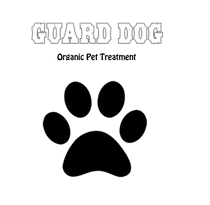· By Harvest Growth
Helping Your Adult Dog Overcome Social Anxiety: Tips for a Happier, More Confident Pup
For some dogs, going to the dog park is the highlight of the day. For others, it’s an anxiety-inducing outing that leaves them hiding under a bench or behind their human’s legs. Our Jolene is in the latter group: happy to host a party at home with dozens of guests, but outside of her comfort zone she retreats back to daddies.
A friend got a puppy about a year before the pandemic. During its first year of life, the puppy was as social as could be, but after a year of picking up on his humans avoiding others at all costs, he now has severe anxiety around strangers and animals outside his household.
There’s plenty of information on how to socialize your puppies and the importance of exposing young dogs to different environments, but there’s much less guidance on how to get an adult dog feeling more comfortable in crowds.
Can you teach old dogs new tricks? How do you socialize an adult dog? Well, according to Lifehacker, the first step is accurately diagnosing your dog’s behavior. “Signs that your dog is not socialized can be over-excitement around other dogs, aggression or shyness around people, and nervousness during walks,” says the lifestyle-guide site.
If that sounds like your pup—or you’re looking to adopt an adult dog and want to be prepared—here are some experts’ tips on socializing dogs who may be set in their ways.
Take things slow—and from a distance
One new activity a week is probably the right cadence when socializing your dog. Cesar Millan recommends taking your dog on long walks around the neighborhood. These walks put your dog in a familiar setting and exposes them to other people and animals without the pressure of getting too close or being in an enclosed space with strangers (of both the human and animal sort). Maybe they see people across the street on one walk and within a week they’re comfortable seeing them on the same sidewalk. “Walks are also wonderful for socializing dogs because they’ll have less pent-up energy due to the exercise and should be calmer and more submissive,” says Millan.
Keep track of your dog’s comfort level.
Some activities will have your pup begging to go home, others they’ll take to just fine. Keep notes on which places and environments elicit which kind of reaction from your dog and use the less-stressful activities to bolster their social confidence. Signs of stress can be ears back, tail tucked, and even yawning and licking their lips.
Remember your pup is not a human—and don’t be afraid to regress your socializing if necessary.
While we love them like family, it’s important to keep in mind that dogs are not little humans. Just because they’re comfortable around a ton of people and animals at a house doesn’t mean they’ll feel the same at the dog park or a restaurant. And just because they felt okay in an environment one day, that doesn’t mean they’ll feel the same the next time. And that’s okay. Training of any kind takes time. Be open to taking two steps forward, one step back.
You’re socializing your dog so they’re happier, just keep that in mind and you won’t go wrong.
